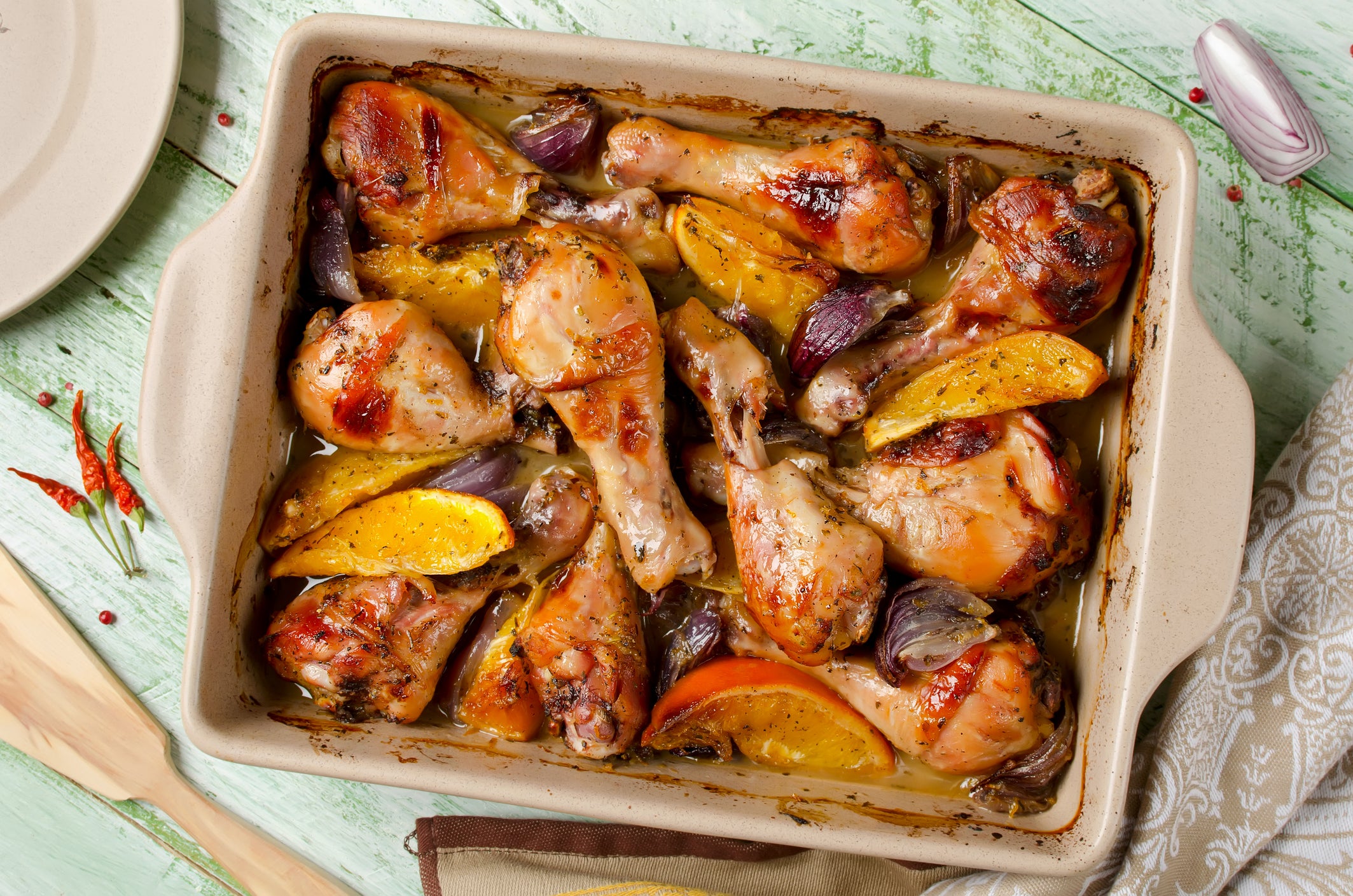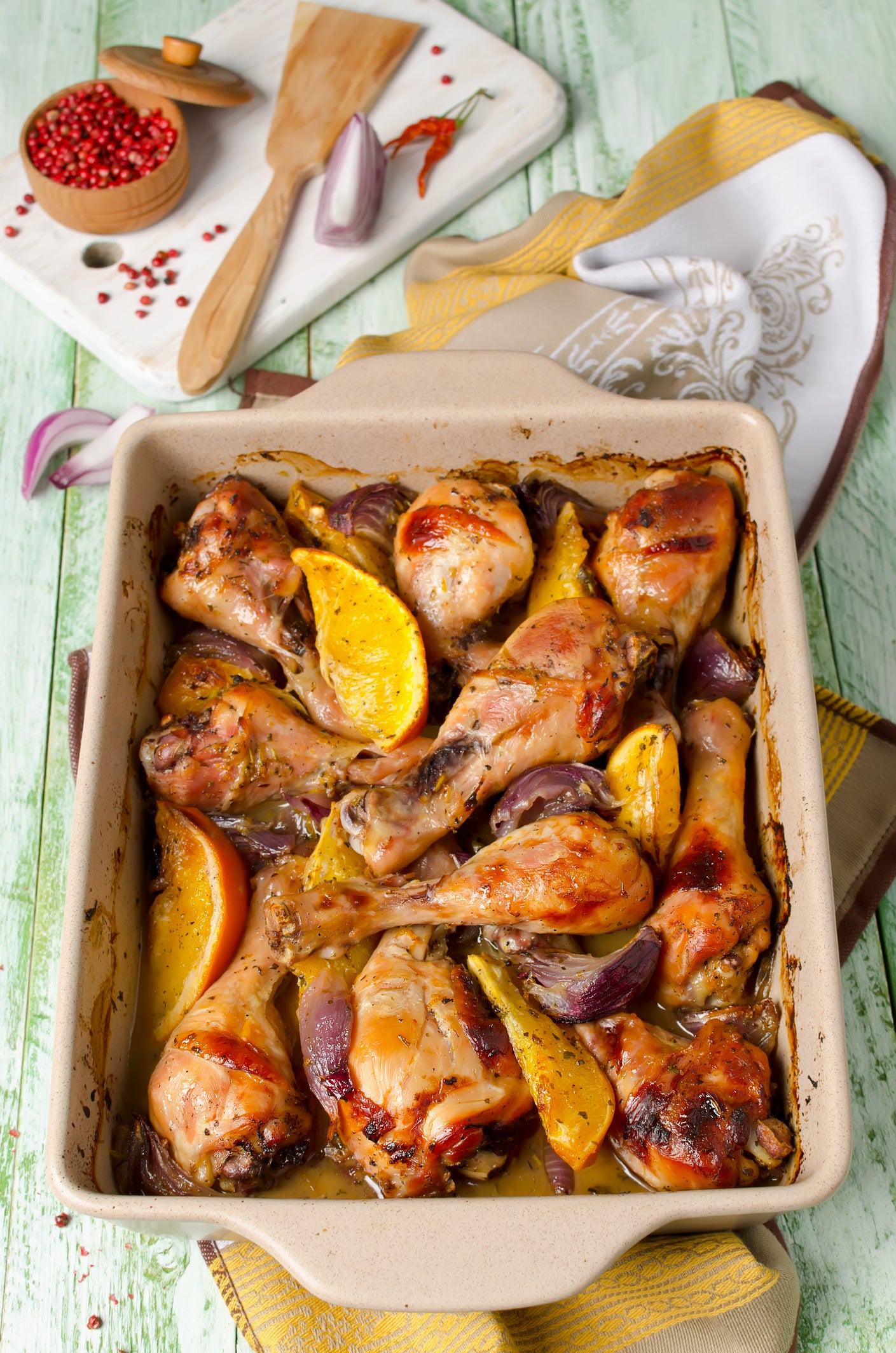In this roasted orange chicken, every part of the fruit shines
This take on Chinese orange chicken shows us how to enjoy every part of the fruit, even the peel, writes Genevieve Ko

Your support helps us to tell the story
From reproductive rights to climate change to Big Tech, The Independent is on the ground when the story is developing. Whether it's investigating the financials of Elon Musk's pro-Trump PAC or producing our latest documentary, 'The A Word', which shines a light on the American women fighting for reproductive rights, we know how important it is to parse out the facts from the messaging.
At such a critical moment in US history, we need reporters on the ground. Your donation allows us to keep sending journalists to speak to both sides of the story.
The Independent is trusted by Americans across the entire political spectrum. And unlike many other quality news outlets, we choose not to lock Americans out of our reporting and analysis with paywalls. We believe quality journalism should be available to everyone, paid for by those who can afford it.
Your support makes all the difference.Peeling an orange releases a spritz of natural oils that coats fingers with a citrus perfume, teasing at the fruit inside. The floral zest and juicy segments are easy to love, but the pith in between, not so much.
In its raw state, the white pith is painfully bitter, but that bitterness is what makes eating the whole orange worthwhile. Usually, the peel is destined for the trash, but it has the potential to be delicious. When it’s simmered to tenderness, it soaks up the cooking liquid’s flavour while keeping its acerbic razor edge — just enough to slice through the fruit’s straightforward sweet-tartness and highlight the hint of flower blossoms.
Using the entire orange is a smart move for desserts, as you can candy it whole or blend it into cake batter, but it also tastes great in savoury dishes. The obvious example: orange chicken from Panda Express (and now, most Chinese takeout restaurants). Although there are no orange pieces among the little boulders of saucy fried chicken, the popular American Chinese dish took inspiration from Chinese dishes that use the fruit itself.
Almost 35 years ago, chef Andy Kao created the dish, along with Andrew Cherng, co-founder and chair of the company, for the first Hawaii location of Panda Express. They were inspired by many things, including the local flavours, as well as a Sichuan beef stir-fry with dried tangerine peels, a Taiwanese fried chicken dish and the sweet-and-sour flavours from the Jiangsu region of China.
“The concept of using citrus as an aromatic is actually a traditional principle in Chinese cooking,” said Andrea Cherng, chief brand officer for the company. (I attended high school with Cherng.)
Like many American Chinese dishes — really, most dishes — a recipe is born of overlapping influences, even if it has a distinct origin story. The path to formulating a meal is less a straight highway than it is a twisty road.
As much as I love Chinese dried tangerine peels, their ocher fragments curved like petals but stiff as bark, I wanted the juiciness of fresh fruit in this preparation
For this roasted orange chicken, one of my ways of cooking American Chinese food at home, the takeout version is just one source of inspiration.
Another is whole tangerines, which season every element of the dish and have thin skins that lose their bitterness more quickly than oranges. After some fruit is juiced for the gingery soy glaze, their spent peels are stuffed into the chicken. More tangerine wedges cook alongside the bird in the same pan, their piths softening in the sauce that lacquers the bird.
The skin ends up deeply browned and the meat silky, reminiscent of the Cantonese soy sauce chicken I was raised on. As much as I love Chinese dried tangerine peels, their ocher fragments curved like petals but stiff as bark, I wanted the juiciness of fresh fruit in this preparation. You don’t have to eat the tangerines in the pan, but, if you do, with a bite of chicken slicked with glaze, you’ll taste the surprising pleasure of bitterness balanced with the simple joys of salty, sweet and sour.
Roasted orange chicken

Serves: 4
Time: 1 hour, 15 minutes
5 small tangerines or clementines
100g dark brown sugar
60ml soy sauce
1 1/2 tsp rice vinegar or distilled white vinegar
1 tsp ground cayenne or other hot red ground chile
1 (1.8kg) whole chicken
Salt and black pepper
8 slices peeled fresh ginger
Method:
1. Heat oven to 205C.
2. Squeeze 60 millilitres juice from 2 to 3 tangerines into a small bowl; reserve the spent peels. Cut the remaining tangerines into wedges with their peels intact, and set aside. Add the brown sugar, soy sauce, vinegar and cayenne to the tangerine juice and whisk until the sugar dissolves.
3. Generously season the chicken inside and out with salt and pepper. Tuck the wingtips behind the body. Stuff the tangerine peels and 6 ginger slices into the cavity, then tie the legs together using kitchen twine. Place in a large ovenproof skillet, and scatter the tangerine wedges and remaining 2 slices ginger around the chicken.
4. Slowly pour the juice mixture all over the chicken, then slide the skillet into the oven. Roast for 30 minutes.
5. Using a large spoon or baster, quickly and carefully coat the chicken with the pan sauce. Continue roasting, basting every 10 minutes, until the chicken is browned and cooked through, 20 to 30 minutes longer. An instant-read thermometer inserted in the thickest part of the breast should register 70 degrees Celsius and, in the leg, 80 degrees Celsius. The chicken will continue to cook while it rests.
6. Transfer the chicken to a cutting board and let rest for about 5 minutes. If the pan sauce isn’t already syrupy, bring it to a boil over medium-high heat on the stovetop. Be sure to wear oven mitts or use a kitchen towel to hold the skillet (the handle is hot). Cook, stirring occasionally, until the bubbles grow larger and paler brown, and the sauce is the consistency of syrup, about 5 minutes. Discard the ginger.
7. Serve the chicken whole or carved with the glaze poured all over the meat. Arrange the tangerine wedges from the pan around the bird. You can eat them, if you’d like.
And to Drink ...
This roasted orange chicken is a dish made for a modestly sweet German riesling, whether kabinett or spätlese style, or even sweeter, like an aged auslese. The sweetness will help the wine harmonise with the sweet, sour, bitter, savoury flavours of the dish, while the pronounced acidity will keep things refreshing. Other sweet wines will go well, too, though perhaps not as well as riesling. You could try a Moscato d’Asti, if you would like a wine with bubbles, or a demi-sec Vouvray. This might also be an opportunity to crack that bottle of Sauternes you’ve saved for years.
This article originally appeared in The New York Times.






Join our commenting forum
Join thought-provoking conversations, follow other Independent readers and see their replies
Comments